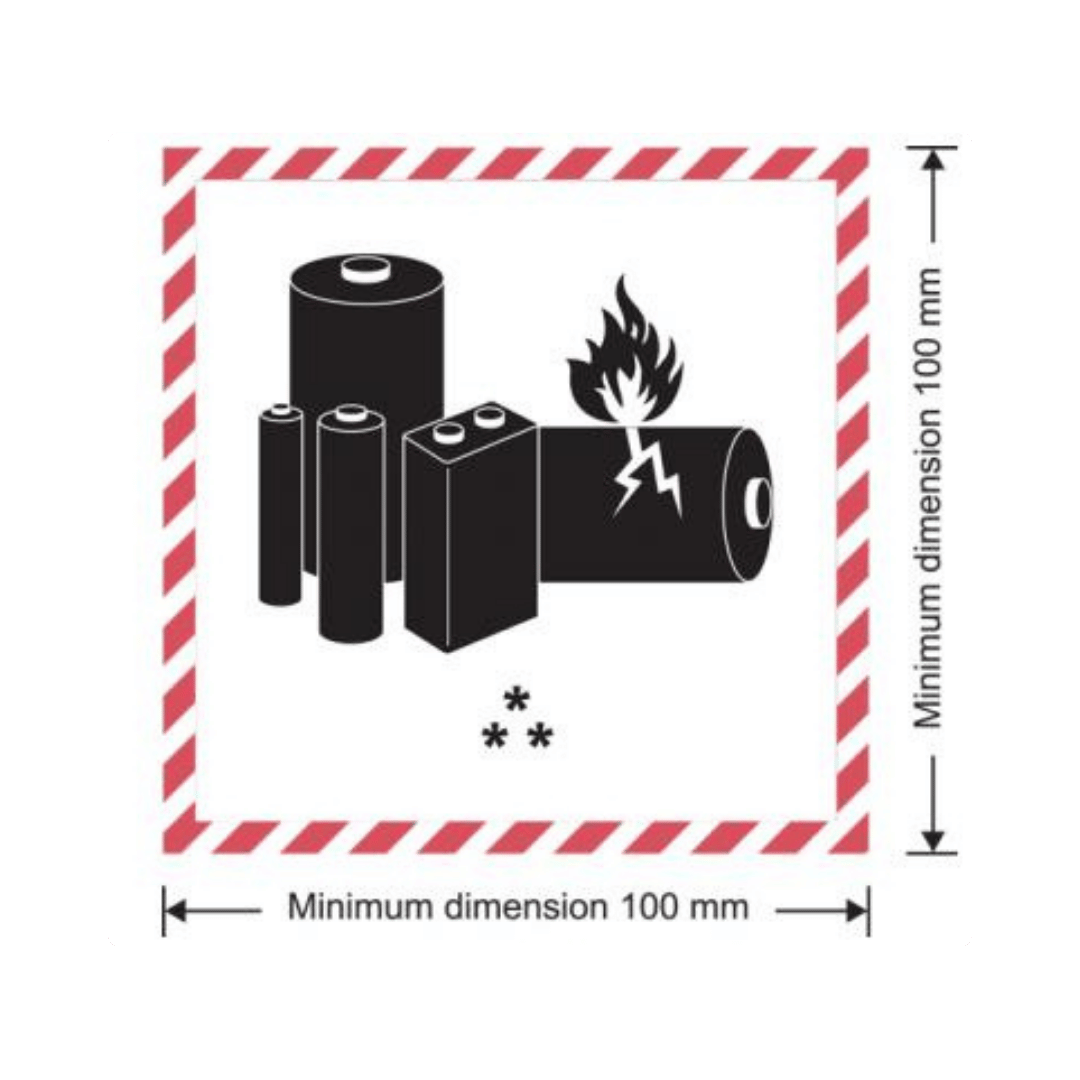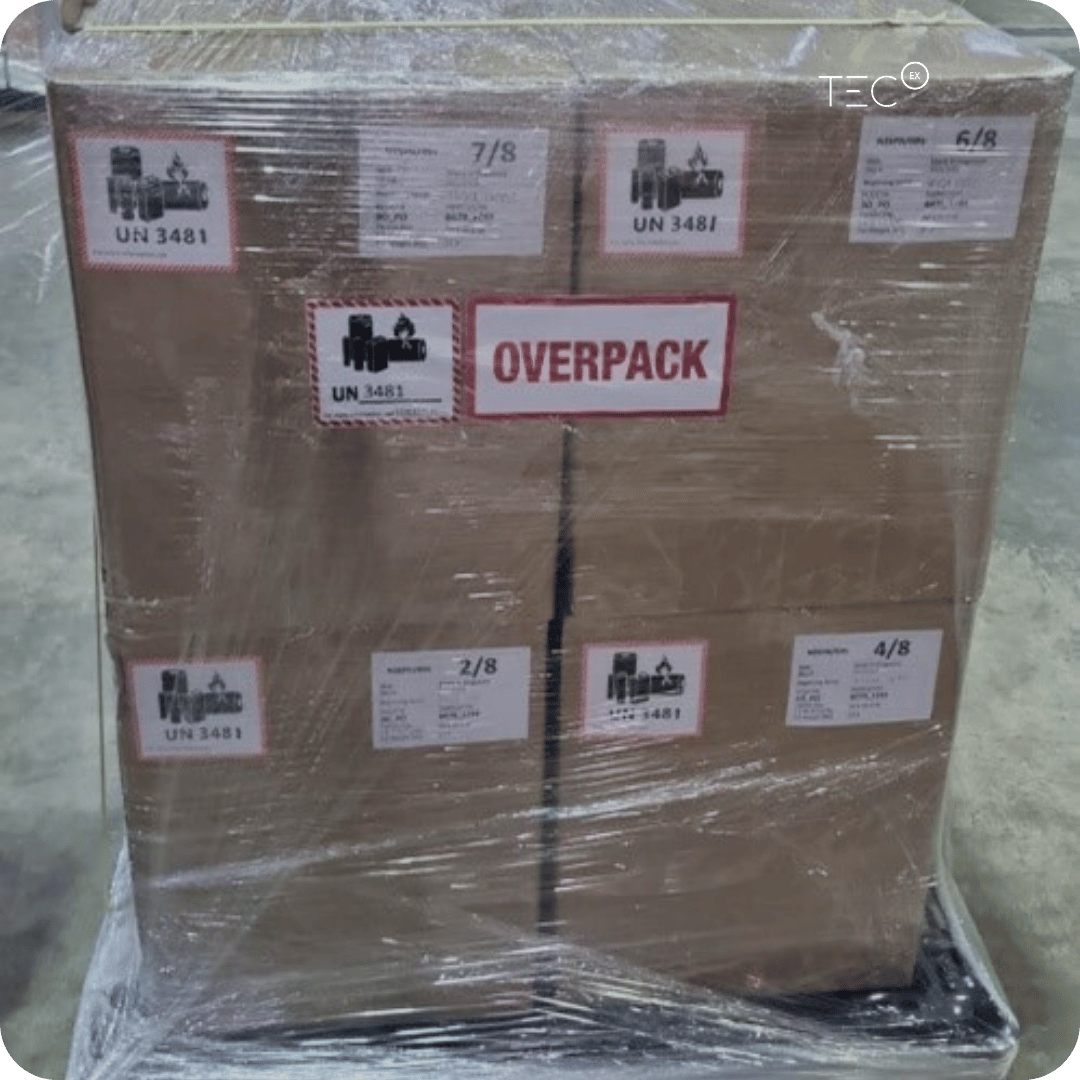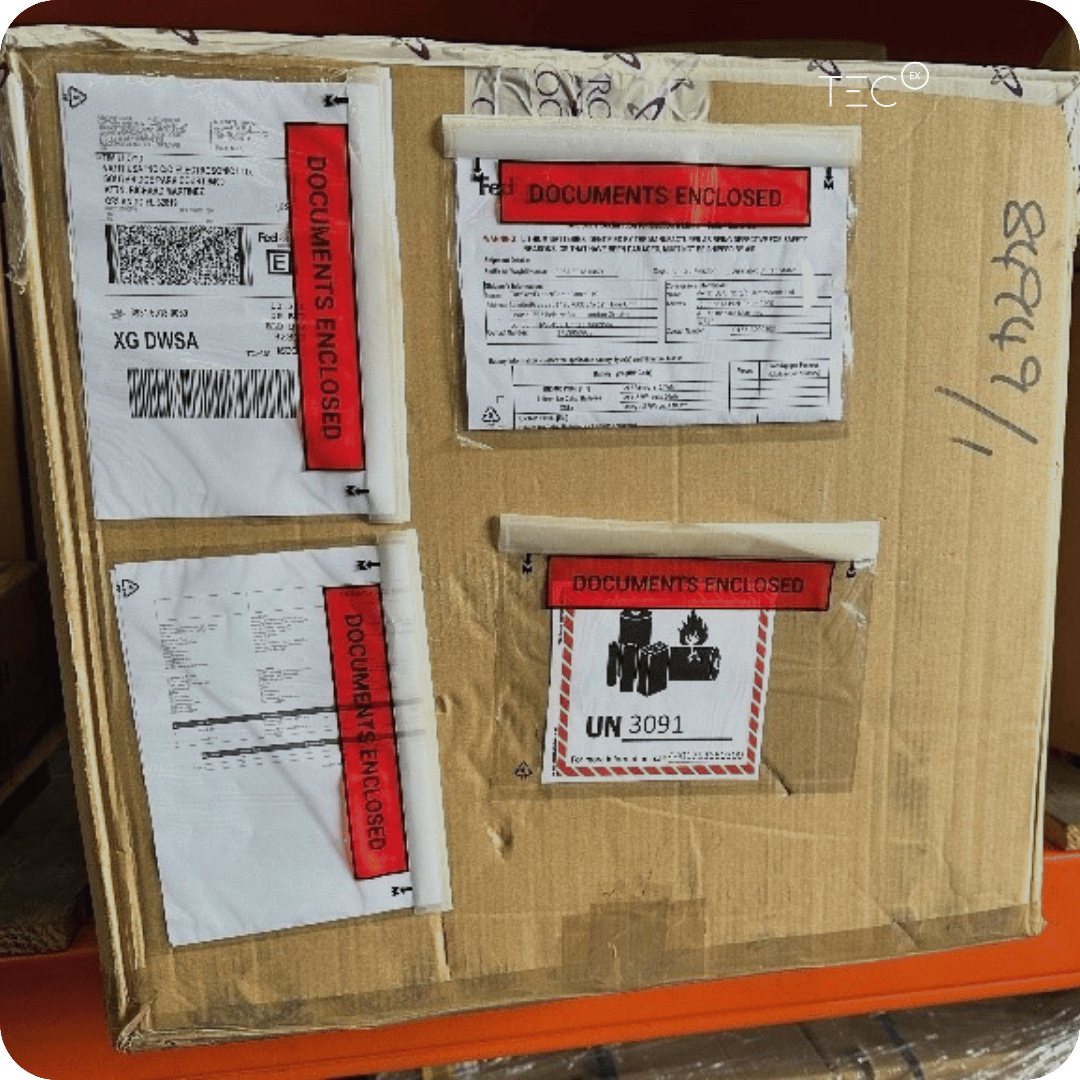Shipping lithium batteries involves navigating complex safety protocols due to their classification as dangerous goods. Understanding how to properly package, label, and transport these batteries is vital to preventing hazardous incidents like fires and explosions.
Let’s help you adhere to shipping regulations and ensure the safe transportation of your lithium batteries.

What Are Dangerous Goods (DG)?
Dangerous goods (DG) are articles or substances capable of posing risks to health, safety, property, or the environment. They are classified based on the International Air Transport Association (IATA) Dangerous Goods Regulations (DGR).
All batteries are considered hazardous and are classified as dangerous goods.
This is particularly true for lithium-ion batteries, which are widely used in consumer electronics such as laptops and cell phones. If damaged, defective, or improperly packaged, these batteries can overheat, leading to major disasters.
Specific restrictions relating to packaging, labeling, quantity limits, training, and reporting must be adhered to when shipping lithium batteries by air, road, or sea. Therefore, understanding battery safety guidelines is crucial for preventing accidents and ensuring the safe transportation of these potentially hazardous materials.
What are the Types of Lithium Batteries?
The term “lithium battery” refers to a family of different chemistries comprising many types of cathodes and electrolytes.
![]()
Lithium-ion batteries
Lithium-ion batteries, sometimes abbreviated to Li-ion batteries, are a type of secondary (rechargeable) battery.
![]()
Lithium metal batteries
They are normally primary (non-rechargeable) batteries that have lithium metal or lithium compounds as an anode.
![]()
Lithium cells
A single-encased electrochemical unit (one positive and one negative electrode) exhibits a voltage differential across its two terminals and may contain protective devices.
![]()
Lithium batteries
Two or more cells are electrically connected together and fitted with devices necessary for use, such as cases, terminals, markings, and protective devices.
Are Lithium Batteries Allowed to be Shipped?
Yes, but shipping lithium batteries comes with strict regulations.
Given their potential hazards, it’s crucial to follow the relevant safety regulations and take proper precautions when preparing to ship lithium batteries.
Battery shipments must comply with both US and international safety rules. Ignoring these regulations can be dangerous and might result in fines or other penalties for those who don’t pack their shipments correctly.
Which Modes of Transport Can Be Used to Ship Batteries?
Batteries can be shipped using any logistics method, such as ocean, air, rail, or road. However, it is important to remember that each method has its own rules and regulations for shipping batteries.
Rechargeable lithium-ion batteries, commonly found in consumer electronics, are prone to overheating if damaged, defective, or improperly packaged. This can pose significant risks, especially during shipment aboard aircraft.
A devastating fire, likely triggered by exploding lithium batteries, engulfed a manufacturing factory near South Korea’s capital, resulting in the deaths of 22 workers and injuring eight others. The blaze erupted while employees were inspecting and packaging the batteries. Because of this, all lithium ion and metal batteries must be shipped as fully regulated dangerous goods.
Guide to Shipping Lithium Batteries | How to Safely Pack and Label Batteries
When it comes to shipping, lithium batteries require special handling and preparations. If not done correctly, shippers may experience:
- Cargo damage from battery fires which can spread throughout the plane or shipping warehouse
- Fires and explosions from thermal runaway. This normally occurs if the batteries short circuit or are damaged
- Injuries to handlers or emergency responders from battery disasters
- Emergency landings or diversions en route if a shipment does catch fire.
→ Learn more about the importance of warehousing to help you prepare for battery shipments.
Packaging Guidelines for Shipping Lithium Batteries
Proper packaging is essential for ensuring battery safety during transport. Here are key guidelines for shipping lithium batteries:
Use Inner Packaging
Batteries should be packed in inner packaging that completely surrounds them, such as a fiberboard box, to prevent short circuits.
Outer Packaging
Ensure the inner packaging is placed in strong, rigid outer packaging (wood, fiberboard, or metal) for impact and crush protection.
Cushioning Material
Lithium batteries require sufficient cushioning material to absorb shocks during transit.
Sealing
Packages must be securely sealed and capable of containing leaks in case of electrolyte spills. Damaged packaging (punctures, tears) is unsuitable for shipment and will be rejected by customs.
Secure Orientation
Batteries should be secured upright to avoid short circuits and kept away from unnecessary heat sources.
Labeling Guidelines for Shipping Lithium Batteries
The following section provides guidelines on how cargo should be labeled when shipping lithium batteries. These guidelines ensure that protocols are followed when shipping dangerous goods and to avoid the cargo being rejected by the airline.
UN Lithium Battery Mark
- Required: Every package containing lithium batteries must display a Lithium Battery Mark/UN label.
- Format: This label must be printed in color and include the appropriate UN number(s) (e.g., UN 33090, UN 3480).
*Place for UN number(s), i.e., UN 33090, UN 3480, and/or UN 3481, as applicable.
**Place for a telephone number

Overpack Label
- For palletized cargo, an ‘Overpack Label’ is always required when one or more boxes on the pallet contain lithium batteries.
- This label needs to be printed in color and cut to size around the red border.
- The overpack sticker and an additional UN label must be attached to the outer wrapping of the pallet.

UN Label Categories
Lithium batteries are assigned one of six classifications known as a UN label. These classifications are as follows:
- UN3090 Lithium metal batteries
- UN3091 Lithium metal batteries contained in equipment
- UN3091 Lithium metal batteries packed with equipment
- UN3480 Lithium-ion batteries
- UN3481 Lithium-ion batteries contained in equipment
- UN3481 Lithium-ion batteries packed with equipment
Lithium Battery Packing Instructions
Each battery also has its own packing instructions (PI) as follows:
- 965 – Lithium-ion batteries
- 966 – Lithium-ion batteries packed with equipment
- 967 – Lithium-ion batteries contained in equipment
- 968 – Lithium metal batteries
- 969 – Lithium metal batteries packed with equipment
- 970 – Lithium metal batteries contained in equipment
Keep this information on hand by downloading your own personal mini-guide to shipping lithium batteries.
Examples Of Correct Lithium Battery Label Application
Multiple boxes on this pallet contain lithium batteries.
Each box that contains a battery has an individual UN label attached.
An Overpack Label and an additional UN label have been attached to the outer wrapping.

A single box moving with a courier that contains a lithium battery.
The relevant UN label has been printed in color and attached to the box. The signed battery declaration is also attached to the box. This is mandatory for courier shipments

Note: For courier shipments, the correct labels and battery declaration must be attached to the box. Various couriers have their own battery declaration templates.
Bonus Tips | Safety Best Practices for Shipping Lithium Batteries
Adhering to safety practices is crucial for successfully shipping batteries:
- Watt-Hours Rating: Check the Watt-hours rating, as higher capacity batteries require greater precautions.
- State of Charge (SOC): For air transport, ensure the SOC does not exceed 30% to minimize the risk of thermal runaway.
- Employee Training: Train staff on proper battery handling and enforce no-smoking policies during battery shipments.
- Emergency Response Plan: Have a robust emergency response plan for incidents like leaks or fires, including specific guidelines and appropriate fire suppressants.
Ship Lithium Batteries Stress Free with TecEx
Proper handling and shipping of lithium batteries are crucial for safety and compliance. By following established packaging, labeling, and documentation guidelines, you can minimize risks and ensure safe transport. Stay informed about the latest regulations, or consider working with an Importer of Record (IOR) to manage these responsibilities effectively.
Does your shipment contain lithium batteries that need proper labeling and packaging?
Shipping Lithium Batteries | FAQs
What regulations apply to shipping lithium batteries?
Shipping lithium batteries must comply with both domestic and international safety regulations, including the IATA Dangerous Goods Regulations (DGR) guidelines.
How can I ensure my lithium batteries are safely packed?
Follow safety guidelines that include using the proper UN labels, securing batteries to prevent movement, and utilizing appropriate cushioning materials.
Are there restrictions on the quantity of lithium batteries that can be shipped?
Yes, there are limits on the number and watt-hour rating of lithium batteries that can be shipped, especially when shipping by air. It is always advisable to check the latest regulations.
What should I do if I’m unsure about shipping lithium batteries?
Avoid unnecessary risks and consult with one of our experts on lithium battery shipping.



